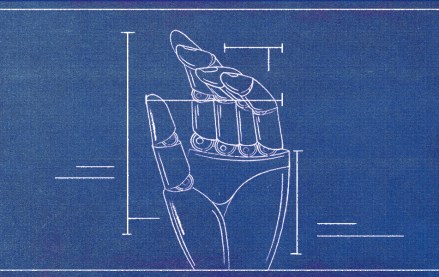
Winston Binch is chief digital officer of Deutsch LA.
Advertising is becoming easier to ignore. Marketers and advertisers are realizing that they need to make products, not just ads. To do it, you need inventors. But here’s the problem: Inventors don’t want to work for you.
In the past few years, Deutsch LA made a heavy transition and commitment to digital. Now, a third of our people are what we would call inventors. Inventors are a different kind of employee. Bringing them on board has brought some real culture clashes because ad people and digital people see the world very differently. We don’t have all of the answers, but here’s what we’ve learned about hiring and keeping inventors.
Big organizations hate change, and cultural change is impossible without support from the CEO. One of the reasons that I chose to come to Deutsch LA was because I knew my CEO, Mike Sheldon, was eager and willing to make the necessary operational changes to support an invention culture.
Inventors need friends in high places, so you also need a chief digital officer. If you want to innovate, you need to make it someone’s job to help keep the organization ahead of the curve. You need someone at the board level who can attract, grow and retain inventors and top digital talent.
You have to make stuff. If you don’t, you won’t be able to keep inventors who are driven to make, not just think, and you won’t learn fast enough. Building your own stuff also helps you move faster when you need it. If you also make room to build your own apps – like we did with Highroll.az, the first net worth guessing game – you give inventors outlets beside client work.
Education is also critical. Two years ago, we created a digital education program called DSchool, led by our Invention team. We put the entire agency through it. That led to clients requesting it, which led directly to successes like Pop Secret Labs and the Perfect Pop app.
We invite everyone to digital. We believe in specialists because we have to. That said, we want the entire organization inventing and working on digital. Our long-term ambition is not to build fiefdoms or separate agencies within the agency. No one wins that way.
So an invention culture has to be built and invested in. A lot of agencies make the mistake of treating tech like production. They sequester it, engaging it only at the end of the creative process – usually when it’s too late to make marked change. We put our entire technology team in the creative department. It acknowledges their skills and keeps them happy. Most of our guys say they’d leave if they weren’t in the creative department.
Brands know they need to invent. But it’s a hard thing to buy with so many demands on the business. Additionally, failure rates are high, as are the costs of entry, when it comes to big agency engagement. So we’ve tried to make invention easier to buy with a service called Inventioni.st. We sell ideas in five days, prototypes in 45 days, and products in six months.
We also support our inventors with something called the Side Project Project, which funds our employees’ passions. We also buy the latest toys, like 3D printers, and inspire them by bringing in luminary tech leaders like Pandora’s Tim Westergren as a part of our Deutsch Commons Live speaker series.
None of these things is easy, but they’re necessary if you want to avoid getting swept aside by changes in technology and culture. Remember, you need these inventors a lot more than they need you.
Disrupt yourself, repeat, and make room for Internet kids.
Image via Shutterstock
More in Marketing

Best Buy, Lowe’s chief marketing officers explain why they launched new influencer programs
CMOs launched these new programs in response to the growing importance of influencers in recommending products.

Agencies create specialist units to help marketers’ solve for AI search gatekeepers
Wpromote, Kepler and Jellyfish practices aim to illuminate impact of black box LLMs’ understanding of brands search and social efforts.

What AI startup Cluely gets — and ad tech forgets — about attention
Cluely launched a narrative before it launched a tool. And somehow, it’s working.





